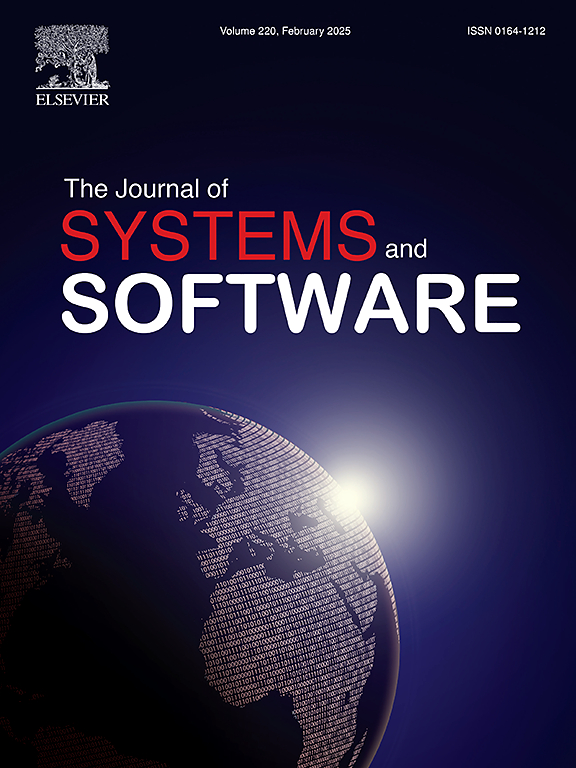进入机器学习领域:机器学习项目的改进分类和表征
IF 4.1
2区 计算机科学
Q1 COMPUTER SCIENCE, SOFTWARE ENGINEERING
引用次数: 0
摘要
机器学习(ML)系统的突出导致了人工智能软件工程(SE4AI)的兴起,它解决了这些系统的独特工程挑战。SE4AI的研究人员参与了三种主要类型的机器学习项目:应用机器学习技术的项目、开发新的机器学习方法的项目以及提供支持工具和库的项目。当前的分类模式根据ML项目的目的和工程质量来区分它们,但是它们缺少对其性质和目的的细粒度分类。在本文中,我们为机器学习项目提出了一种新的、工具支持的自动分类模式,创造了机器学习基于规则的自动分类工具包(MARK),它建立在Gonzalez等人的工作之上,将应用的机器学习项目分类为“ML模型消费者”、“ML模型生产者”和“ML模型生产者”。消费者。我们通过两项实证研究来评估MARK。第一种方法评估了来自两个数据集的4603个ML项目的分类准确性。第二部分分析了存储库度量,例如社区参与、活动和结构,以展示MARK在识别每个项目类型的独特趋势和特征方面的潜力。我们的研究结果表明,我们的分类器得分很高,特别是对于“ML-Model生产者”项目,尽管“ML-Model消费者”分类仍然存在挑战。分类项目之间存储库度量的显著差异突出了MARK的有用性,为研究ML项目的社会技术动态的研究人员提供了见解。本文章由计算机程序翻译,如有差异,请以英文原文为准。
Into the ML-Universe: An improved classification and characterization of machine-learning projects
The prominence of Machine Learning (ML) systems led to the rise of Software Engineering for Artificial Intelligence (SE4AI), which addresses the unique engineering challenges of these systems. Researchers in SE4AI engage with three primary types of ML projects: those that apply ML techniques, those that develop new ML methodologies, and those that provide support tools and libraries. Current classification schemas distinguish ML projects based on their purpose and engineering quality, yet they miss a fine-grained classification of their nature and purpose. In this paper, we propose a novel, tool-supported automated classification schema for ML projects, coined Machine learning Automated Rule-based Classification Kit (MARK), that builds on top of the work by Gonzalez et al. to refine the classification of applied ML projects into ‘ML-Model Consumers,’ ‘ML-Model Producers,’ and ‘ML-Model Producers & Consumers.’ We evaluated MARK through two empirical studies. The first assessed its classification accuracy across 4,603 ML projects from two datasets. The second analyzed repository metrics, such as community engagement, activity, and structure, to demonstrate MARK’s potential in identifying trends and characteristics unique to each project type. Our findings indicate high F1-scores for our classifier, particularly for ‘ML-Model Producer’ projects, though challenges remain for ‘ML-Model Consumer’ classification. Significant differences in repository metrics among the classified projects highlight the usefulness of MARK, offering insights for researchers studying the socio-technical dynamics of ML projects.
求助全文
通过发布文献求助,成功后即可免费获取论文全文。
去求助
来源期刊

Journal of Systems and Software
工程技术-计算机:理论方法
CiteScore
8.60
自引率
5.70%
发文量
193
审稿时长
16 weeks
期刊介绍:
The Journal of Systems and Software publishes papers covering all aspects of software engineering and related hardware-software-systems issues. All articles should include a validation of the idea presented, e.g. through case studies, experiments, or systematic comparisons with other approaches already in practice. Topics of interest include, but are not limited to:
•Methods and tools for, and empirical studies on, software requirements, design, architecture, verification and validation, maintenance and evolution
•Agile, model-driven, service-oriented, open source and global software development
•Approaches for mobile, multiprocessing, real-time, distributed, cloud-based, dependable and virtualized systems
•Human factors and management concerns of software development
•Data management and big data issues of software systems
•Metrics and evaluation, data mining of software development resources
•Business and economic aspects of software development processes
The journal welcomes state-of-the-art surveys and reports of practical experience for all of these topics.
 求助内容:
求助内容: 应助结果提醒方式:
应助结果提醒方式:


